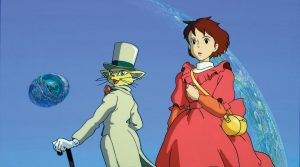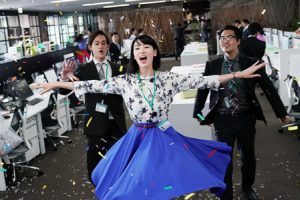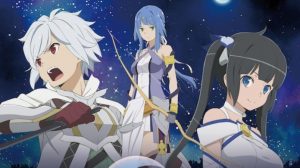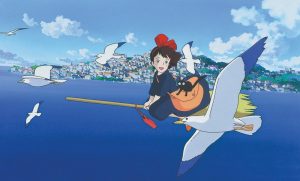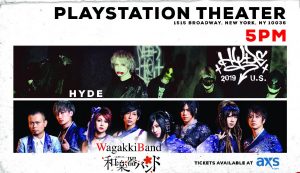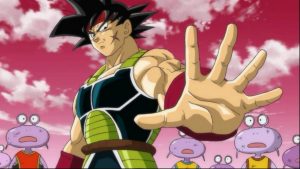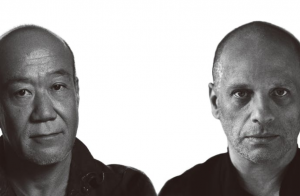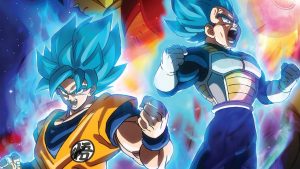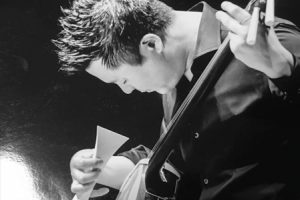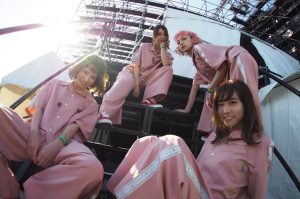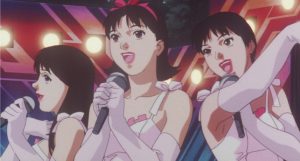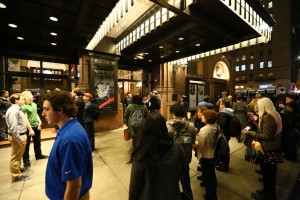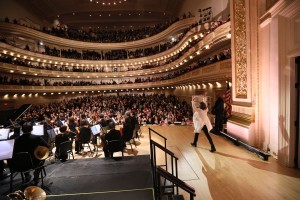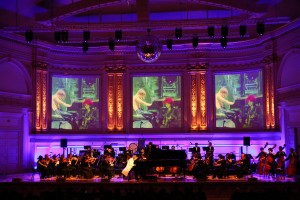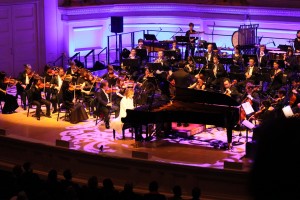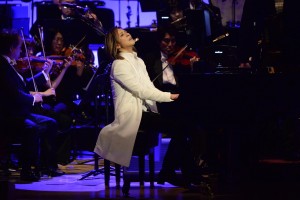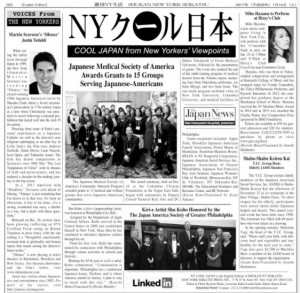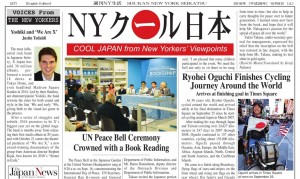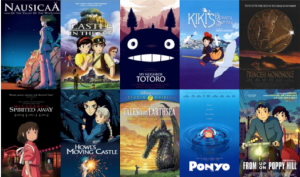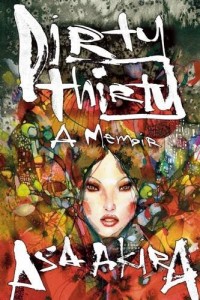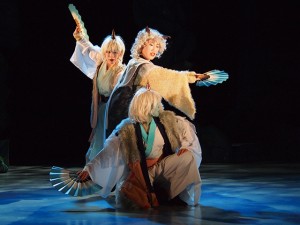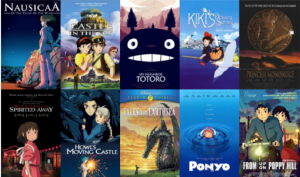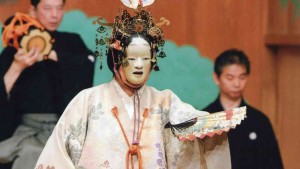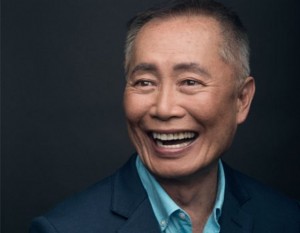JQ Magazine: JQ&A with Director Shinya Tsukamoto at JAPAN CUTS
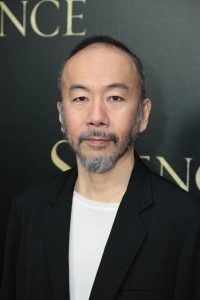
“In the film Killing, I don’t necessarily have one political message that’s strongly pursued, and I want the audience to figure out the film’s message for themselves. Personally speaking, I find it to be incredibly frightening today of what the Japanese government is doing.” (Courtesy of Shinya Tsukamoto)
By Lyle Sylvander (Yokohama-shi, 2001-02) for JQ magazine. Lyle used to work in New York City for Merchant Ivory Productions and the National Geographic Channel. He currently teaches history, international relations and film at an international high school in Shanghai, China.
Shinya Tsukamoto is a Japanese filmmaker most famous for his Tetsuo trilogy of horror/sci-fi films: Tetsuo: The Iron Man (1989), Tetsuo II: Body Hammer (1992), and Tetsuo: the Bullet Man (2009). Other films include Hiruko the Goblin (1991), Bullet Ballet (1998), and Tokyo Fist (1995). He has also acted in most of his own films as well as those of others, most recently in Martin Scorsese’s Silence (2016).
Last week, Tsukamoto made a special appearance at Japan Society in New York City for their annual JAPAN CUTS film festival to receive their prestigious CUT ABOVE Award for Outstanding Achievement in Film, as well as to speak at the East Coast premiere of his latest film, Killing. In this exclusive interview, JQ spoke with the director about violence and politics in his work, lifelong influences, and the story behind the name of his most enduring creation. (Translation by Aiko Masubuchi.)
You have stated that Killing was made in response to the violence you see today in society. All of your previous films have dealt with violence in one way or another—how is your position towards violence different in this film than in others?
When I was little, and for a long time, of course there were some violent things that happened in Japan, but mostly speaking, the violence was outside Japan and Japan was a country that would try to avoid war. It was that way for a long period of time. So, in my earlier films, the violence I was depicting was more fantastical. But now, times have changed: Japan is turning into a country that is getting ready to go to war, and so I could no longer depict violence through a fantastical lens—I needed to depict violence as something realistic and scary and use it as a warning, and so could no longer depict violence the same way.
Does this mean that your film is in response to the Abe administration’s recent foreign policy and re-militarization of Japan?
In the film, I don’t necessarily have one political message that’s strongly pursued, and I want the audience to figure out the film’s message for themselves. Personally speaking, I find it to be incredibly frightening today of what the Japanese government is doing.
How does your version of Nobi (Fires on the Plain) differ from Kon Ichikawa’s classic version of the same anti-war story?
I am a huge fan of Kon Ichikawa’s film Nobi, and I first saw it when I was in high school. I thought it was a fantastic anti-war statement and incredibly moving. In fact, the films I made as a teenager were greatly influenced by it. What I like about Ichikawa’s film is that he brings the camera into the internal darkness of the characters. Even though the setting of the original story is in the Philippines, Ichikawa’s film was shot in Japan. But what struck me in the original story was the beautiful nature and the landscapes of the Philippines, which contrasted the horror of what the soldiers were doing to each other. To me, it seemed important to have the Philippines’ beautiful nature as a backdrop, so the way we approached the film visually was quite different.
JQ Magazine: Nippon in New York — Studio Ghibli Fest, JAPAN CUTS
By JQ magazine editor Justin Tedaldi (CIR Kobe–shi, 2001-02). Justin has written about Japanese arts and entertainment for JETAA since 2005. For more of his articles, click here.
Before and after the outdoor fireworks, enjoy some summer events in the cool indoors, whether it’s taking in one of the dozens of films premiering at Japan Society’s annual festival, or catching a Studio Ghibli classic.
This month’s highlights include:
July 1-2, 7:00 p.m.
Regal E-Walk 42nd Street 13, 247 West 43nd Street
AMC Empire 25, 234 West 42nd Street
AMC Kips Bay 15, 570 Second Avenue
$12.50
Discover the brilliance of this heartwarming coming-of-age classic from the legendary Studio Ghibli, creators of My Neighbor Totoro and the Academy Award-winning Spirited Away. A chance encounter with a mysterious cat sends Shizuku, a quiet schoolgirl, on a quest for her true talent. Together with Seiji, a boy determined to follow his dreams, and enchanted by The Baron, a magical cat figurine who helps her listen to the whispers of her heart, Shizuku embarks on a life-changing adventure that takes her beyond the boundaries of her imagination. This beautiful tale based on a screenplay from Hayao Miyazaki will delight and amaze audiences of all ages, and features a special introduction by Rebecca Sugar, the creator of the award-winning series Steven Universe. The July 1 screening is presented in English, and the July 2 screening is presented in Japanese with English subtitles.
July 19-28
Japan Society, 333 East 47th Street
$15, $12 seniors/students & persons with disability, $8 members (per screening)
“This 13th edition of JAPAN CUTS provides testament to the continued vitality of contemporary Japanese cinema with a wide array of films by emerging filmmakers who dare to take formal and thematic risks,” says Kazu Watanabe, Japan Society Deputy Director of Film. The largest festival of contemporary Japanese cinema in North America returns, premiering 26 features and 16 shorts across 10 days, JAPAN CUTS 2019 offers access to the best new films from Japan never-before-seen in NYC. Take a deep dive into one of the world’s most vital film cultures with a diverse slate of studio blockbusters, cutting-edge indies, thought-provoking documentaries, rediscovered classics and avant-garde short works. Plus, appearances by special guest filmmakers and stars (including this year’s CUT ABOVE Award recipient Shinya Tsukamoto), post-screening Q&As, parties, talks, free events, and more!
Tuesday, July 23, 7:30 p.m.
Is it Wrong to Pick Up Girls in a Dungeon?: Arrow of the Orion
Regal E-Walk 42nd Street 13, 247 West 43nd Street
AMC Empire 25, 234 West 42nd Street
AMC Kips Bay 15, 570 Second Avenue
$12.50
Adapted from the hit manga! Far from the dungeon beneath Oraria rises a new threat, one the beautiful goddess Artemis has sworn to destroy with the help of her chosen warrior. But this fighter isn’t the renowned Ais Wallenstein or another storied hero of Orario legend. Instead the fate of Artemis’ quest falls upon the shoulders of Bell Cranell, who must partner with the goddess and stand against the menace lurking in the remains of a distant, ancient city. Although Bell is the ordained champion of Artemis and a member of the goddess Hestia’s familia, their adventure will test every skill and take every ounce of courage that Bell has—and perhaps, along the way, turn him into the hero he has always aspired to be. Presented in Japanese subtitles, this limited event will also feature never-before-seen interviews with Japanese production staff, JC STAFF studio tour, art gallery, and franchise retrospective.
July 28-29, July 31
Kiki’s Delivery Service: 30th Anniversary
Regal E-Walk 42nd Street 13, 247 West 43nd Street
AMC Empire 25, 234 West 42nd Street
AMC Kips Bay 15, 570 Second Avenue
$12.50
Celebrate the 30th anniversary of this beloved coming-of-age story from the legendary Studio Ghibli and Academy Award-winning director Hayao Miyazaki! Kiki is a resourceful young witch who uses her broom to create a delivery service, only to lose her gift of flight in a moment of self-doubt. It is a tradition for all young witches to leave their families on the night of a full moon and fly off into the wide world to learn their craft. When that night comes for Kiki, she embarks on her new journey with her sarcastic black cat, Jiji, landing the next morning in a seaside village, where her unique skills make her an instant sensation. Don’t miss this delightfully imaginative and timeless story of a young girl finding her way in the world. The July 28 and 31 screenings are presented in English, and the July 29 screening is presented in Japanese with English subtitles.
Want to stay in the loop on future events? Follow Justin on Facebook and Twitter.
JQ Magazine: Nippon in New York — The GazettE, ‘Detective Pikachu,’ Japan Night Live
By JQ magazine editor Justin Tedaldi (CIR Kobe–shi, 2001-02). Justin has written about Japanese arts and entertainment for JETAA since 2005. For more of his articles, click here.
As spring continues and the weather continues to warm, New Yorkers can enjoy activities all over the city both indoors and out.
This month’s highlights include:
Monday, May 6, 8:00 p.m.
PlayStation Theater, 1515 Broadway
$50
Making their return to NYC after a three-year absence are the GazettE, a Kanagawa-based rock quintet that follows in the footsteps of other Gotham-conquering visual kei acts like X Japan and LArc~en~Ciel. Formed in 2002, the band has performed in Europe multiple times since 2007, and will headline across America this spring in support of its latest album, 2018’s Ninth. Still completely self-produced, the GazettE continue moving forward, uncompromised in their artistic and unique worldview at home and abroad.
Premieres Friday, May 10
Pokémon Detective Pikachu
Various theaters
In this first-ever live-action Pokémon film, ace detective Harry Goodman (Justice Smith) goes mysteriously missing, prompting his 21-year-old son Tim to find out what happened. Aiding in the investigation is Harry’s former Pokémon partner, Detective Pikachu (voiced by Ryan Reynolds): a hilariously wise-cracking, adorable super-sleuth who is a puzzlement even to himself. Finding that they are uniquely equipped to communicate with one another, Tim and Pikachu join forces on a thrilling adventure to unravel the tangled mystery in a modern metropolis where humans and Pokémon live side by side in a hyper-realistic live-action world.
Sunday, May 12, 6:00 p.m.
Japan Night: HYDE & WagakkiBand
PlayStation Theater, 1515 Broadway
$35
Presented in collaboration with Japan Day @ Central Park, Japan 2019 Presents Japan Night will celebrate contemporary popular Japanese music with four of the most successful artists in Japan today through two consecutive shows. HYDE, who is also known as a lead singer of L’Arc-en-Ciel (the first Japanese act to headline Madison Square Garden in 2012) and a member of VAMPS, is a pioneer of Japanese rock who has recorded more than 60 songs breaking the Oricon (Japanese Billboard Chart) top 10.
WagakkiBand is a viral video sensation that combines traditional Japanese instruments with modern rock. They fuse shigin (poetry recitation, one of Japan’s classic performing arts), wagakki (traditional Japanese musical instruments), and rock. The music video of “Senbon Zakura,” included in their 2014 debut album, has been viewed more than 100 million times on YouTube. After five years, they now sell out arena shows, and their special live organized by Tencent streamed more than 100 million times in the first 24 hours.
JQ Magazine: Nippon in New York — Joe Hisaishi, Anime NYC, ‘Shoplifters’
By JQ magazine editor Justin Tedaldi (CIR Kobe-shi, 2001-02). Justin has written about Japanese arts and entertainment for JETAA since 2005. For more of his articles, click here.
From the silver screen to the stage to J-pop, November is just as colorful as the autumn leaves drifting through the air. Add these live events to the mix and you’ve got an irresistibly epic rundown.
This month’s highlights include:
Nov. 3, 5
Dragon Ball Z: Saiyan Double Feature
Regal E-Walk 42nd Street 13, 247 West 43nd Street
AMC Empire 25, 234 West 42nd Street
$12.50
Catch these two DBZ films back-to-back for the first time in U.S. theaters—fully remastered! In Bardock: The Father of Goku, a low-class Saiyan soldier unexpectedly inherits the ability to see into the future. Haunted by visions of his own end as well as the destruction of his entire planet, Bardock sets off on a nightmarish race with fate to advert the impending disaster. Then, in Fusion Reborn, an industrial disaster in Other World unleashes the monstrous Janemba, a beast who grows stronger with each passing minute. While Goku and Vegeta fight for Other World’s survival, Goten and Trunks confront a ghoulish army of the undead back on Earth, where only an unprecedented act of teamwork can save the universe! Presented in English.
Saturday, Nov. 10, 7:30 p.m.
Akiko Yano + Seiho: Unusual Pairings
Japan Society, 333 East 47th Street
$38, $30 members
Beloved pianist/singer-songwriter Akiko Yano returns to Japan Society for a U.S. premiere collaboration with rising Osaka-based electronic sound artist/DJ and ikebana enthusiast Seiho. This one-of-a-kind concert mixes the singular stylings of Yano’s piano and singing with Seiho’s thumping, atmospheric beats, and flower arranging! Join us on this moody trip into the soundscapes of these two formidable artists as their music melds, merges and even takes shape in floral form.
Sunday, Nov. 11, 7:30 p.m.
Joe Hisaishi and David Lang: Music Future Vol. 5
Zankel Hall, 881 Seventh Avenue
$59-$99
Music Future is a concert series started in 2014 by Studio Ghibli film composer, conductor, and pianist Joe Hisaishi. Intended to introduce the latest in contemporary classical music, Music Future includes works from composers Arnold Schoenberg, John Adams, David Lang, Philip Glass, and Bryce Dessner performed by the Future Orchestra. In addition, Hisaishi presents a newly composed work each year. This year, David Lang will join Music Future at Carnegie Hall to present his latest work, Increase.
JQ Magazine: Nippon in New York — New York Comic Con, ‘RWBY,’ ‘Spirited Away’
By JQ magazine editor Justin Tedaldi (CIR Kobe-shi, 2001-02). Justin has written about Japanese arts and entertainment for JETAA since 2005. For more of his articles, click here.
The Japan-centric events of the month ahead promise to be as rich and full as autumn itself—brisk and colorful, with a dash of unpredictability.
This month’s highlights include:
Oct. 4-7
Jacob K. Javits Convention Center, 655 West 34th Street
$50 (for Thursday, Oct. 4)
Breaking attendance records each year, the East Coast’s biggest gathering for fans of comics, film, anime and manga returns with its biggest roster of Hollywood talent to date, featuring exclusive screenings, gaming, cosplay photo ops, and more! Enjoy interactive panels on Oct. 4-6 from publishers Vertical Comics and Kodansha Comics, and check them out at booth #2109 to pick up con-exclusive merch and pre-release titles like APOSIMZ, Battle Angel Alita and The Ghost in the Shell: Global Neural Network. Special guests this year include Masako Nozawa (discussing the upcoming film Dragon Ball Super: Broly at the Hulu Theater at Madison Square Garden Oct. 5), Toshihiro Kawamoto (Cowboy Bebop) and Akira Himekawa (The Legend of Zelda)!
Friday, Oct. 5, 7:30 p.m.
Hidejiro Honjoh x ICE: Shamisen Evolution
Japan Society, 333 East 47th Street
$38, $30 members
Listen to Hidejiro Honjoh, young shamisen prodigy and disciple of Hidetaro Honjoh, create this traditional instrument’s 21st-century voice in an evening featuring living composers from the U.S. and Japan. Joined by members of the most sought-after contemporary music group International Contemporary Ensemble (ICE), Hidejiro delivers three world premieres composed by Grammy-nominee Vijay Iyer, Nathan Davis and Yu Kuwabara. The program also includes pieces by Yuji Takahashi and Dai Fujikura, along with the U.S. premiere of the full score of Scott Johnson’s Up and Back for shamisen, electric guitar, cello and piano. Followed by a MetLife Meet-the-Artists Reception.
Oct. 24-28
Locations and prices vary
Taste what you see on the screen! The Food Film Festival specializes in creating multisensory food and film experiences. At their events, guests watch films about food and simultaneously taste the exact dishes they see on the screen…right in their seats! This year’s events include the world premiere of Anthony Bourdain Parts Unknown / Lower East Side (Oct. 24), and Chikarashi: Sustainable, Chef-Driven Poke Bowl (Oct. 26), about the Manhattan-based contemporary sea-to-table eatery inspired by Japanese and Hawaiian cuisine. For a complete listing, click here.
JQ Magazine: Nippon in New York — ‘Akira’ @ 30, SCANDAL from Japan, ‘Dragon Ball Z’
By JQ magazine editor Justin Tedaldi (CIR Kobe-shi, 2001-02). Justin has written about Japanese arts and entertainment for JETAA since 2005. For more of his articles, click here.
As the summer winds fade into fall colors, the weeks ahead are shaping up with these exciting events, ready to be enjoyed after Labor Day.
This month’s highlights include:
Now through Sept. 6
Metrograph, 7 Ludlow Street
$15
More than any single feature film, Katsuhiro Otomo (Memories, Steamboy)’s adaptation of his own manga series is the one that introduced the glories of Japanese anime to an international audience. In 2019, thirty-one years after the Japanese government nuked Tokyo as damage control for an experiment involving using ESP on children, biker Kaneda rides one of the most iconic motorcycles in cinema into the unknown, on a mission to save his friend Tetsuo from a vast and far-reaching conspiracy. A feast of imagistic imagination, climaxing in an unforgettable battle royale in the Tokyo Olympiad. Presented in Japanese with English subtitles.
Thursday, Sept. 5, 8:00 p.m.
PlayStation Theater, 1515 Broadway
$45
SCANDAL is one of Japan’s most popular rock bands, epitomizing the J-rock aesthetic. The four-piece unit adeptly blends pop, rock and alternative music sensibilities with hip and contemporary fashion sensibilities and unstoppable girl star power. The band is presently in the midst of a world tour in support of its eighth record, HONEY, which was released in February and peaked at Number Three on the Japanese Oricon weekly sales charts and extended the band’s streak of being the only girl group to consecutively have each of their albums place the Oricon Top Five. The album features ten tracks including a rendition of the band’s 10th anniversary single, “Take Me Out.”
Sept. 6 & 10
Perfect Blue: 20th anniversary
AMC Empire 25, 234 West 42nd Street
AMC Kips Bay 15, 570 Second Avenue
Regal Union Square 14, 850 Broadway
$12.50
Perfect Blue, the groundbreaking and rarely screened first film from the legendary late director Satoshi Kon (Tokyo Godfathers, Paprika), returns to theaters for its 20th anniversary in a brand-new digital transfer. Rising pop star Mima has quit singing to pursue a career as an actress and model, but her fans aren’t ready to see her go. Encouraged by her managers, Mima takes on a recurring role on a popular TV show, when suddenly her handlers and collaborators begin turning up murdered. Harboring feelings of guilt and haunted by visions of her former self, Mima’s reality and fantasy meld into a frenzied paranoia. As her stalker closes in, in person and online, the threat he poses is more real than even Mima knows, in this iconic psychological thriller that has frequently been hailed as one of the most important animated films of all time. The September 6th screenings are presented in Japanese with English subtitles and the September 10th screenings are dubbed in English.
JQ Magazine: Film Review — JAPAN CUTS 2018 at Japan Society
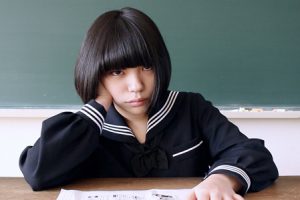
An “oh-my-god-it’s-too-accurate portrayal of first love” starring Aira Sunohara, Amiko makes its U.S. premiere at Japan Society July 16. (Amiko © Yoko Yamanaka)
By Katharine Olla for JQ magazine. A Friend of JET, Katharine taught as an ALT in a public elementary school in Gunma Prefecture from 2015-16. She currently works at Japan Society in New York.
It’s summer in the city, and that means another year of JAPAN CUTS, North America’s largest festival of contemporary Japanese cinema. From July 19-29, Japan Society will screen 30 films ranging from dramas and comedies to documentaries, anime, and experimental works. The festival will also feature special guest appearances by directors, documentary filmmakers, and actors, including the legendary actress Kirin Kiki, who will receive the CUT ABOVE Award for Outstanding Performance in Film.
It was difficult to choose just three to review, so I decided to watch films with strong female leads (because that’s one of the categories that Netflix tells me I like).
What if I just ran away and lived in the woods? is a question some of us ask after a morning commute on New York public transit. Get your fix by immersing yourself in the surreal, visually-striking world of Kushina, What Will You Be.
Anthropologist Soko (Yayoi Inamoto) and her assistant Keita (Suguru Onuma) trek through the forest to locate and study an elusive group said to be in the mountains. What they find is a women-only colony led by matriarch Onikuma (Miyuki Ono). Onikuma’s family consists of her daughter Kagu (Tomona Hirota) and granddaughter Kushina (Ikumi Satake), whose secret pastime is listening to her cassette player. After the outside world intrudes, how will this closed community react? And what is Kushina listening to on her Walkman?
This is Moët Hayami’s debut feature film, and it’s a labor of love: as its writer, director, art director, costume designer, and editor, with this level of care she’s managed to curate every detail of this film to create a truly singular world within a world. It’s hard to shake off after the credits roll.
Featuring an intro and Q&A with writer/director Moët Hayami and actress Tomona Hirota, Kushina, What Will You Be screens Wednesday, July 25 at 6:30 p.m. (international premiere).
Concert Review: Yoshiki Classical Special at Carnegie Hall
By JQ magazine editor Justin Tedaldi (CIR Kobe-shi, 2001-02). For more of his articles, click here.
On Jan. 12-13, Yoshiki of the band X Japan—the nation’s number one rock group, which has sold out the 55,000 seat Tokyo Dome a record 18 times and has moved more than 30 million singles and albums since forming in the 1980s—fulfilled a lifelong dream by debuting, and also selling out, two consecutive nights at Carnegie Hall in New York City with his Yoshiki Classical Special performance.
Backed by the Tokyo Philharmonic Orchestra conducted by Yuga Cohler with arrangements by Shelly Berg, the nearly three-hour concert brought an arena vibe to the traditional concert hall setting. Featuring a mix of X Japan classics, new material, and pitch perfect renditions from the book of Beethoven and Tchaikovsky, Yoshiki brought the tunes to life at the piano, and additional turns from guest vocalists Katie Fitzgerald and Ashley Knight provided bright spots of witty banter (unlike other Japanese superstars poised for American fame, Yoshiki’s English is fluent).
The production team pushed the limits of imagination for Carnegie Hall, with lighting so intense that Yoshiki himself had to ask his crew mid-song to reposition of one of the rigs. Videos and still images (courtesy of last year’s internationally released documentary We Are X) were amply beamed overhead throughout the show, giving the audience the full scope of Yoshiki’s lifelong artistic journey.
In the final stretch following the X Japan epic “Art of Life,” an instrumental version of “Endless Rain” spotlighted a colossal mirror ball that bathed the hall in brilliant, swirling light, as those in the front rows unexpectedly belted out its bilingual chorus to the delight of longtime fans.
While X Japan supporters might have to wait a bit longer to witness another full band performance in New York (they last headlined Madison Square Garden in 2014), Yoshiki Classical Special easily lived up to its name, making another dream come true for both performer and audience.
For additional photos and videos of the concert, visit Yoshiki’s homepage at www.yoshiki.net.
By JQ magazine editor Justin Tedaldi (CIR Kobe-shi, 2001-02) for Shukan NY Seikatsu. Justin has written about Japanese arts and entertainment for JETAA since 2005. For more of his articles, click here.
While riding the bullet train through Japan in 1989, the New York filmmaker Martin Scorsese was reading “Silence,” the award-winning 1966 Japanese historical novel by Shusaku Endo abut a Jesuit missionary’s persecution in 17th century Japan at a time when Christianity was practiced in secret following a national prohibition that lasted well into the mid-19th century.
Drawing from some of Endo’s personal experiences as a Japanese Catholic (as well as the director’s own religious upbringing as an altar boy in Little Italy), the film stars Andrew Garfield, Adam Driver, Liam Neeson, Issei Ogata, and Tadanobu Asano. The film has drawn comparisons to Scorsese’s own 1988 film “The Last Temptation of Christ” with its themes of faith and perseverance, and has endured a decades-in-the-making journey to the big screen.
In a 2011 interview with “Deadline,” Scorsese said ahead of filming, “‘Silence’ is just something that I’m drawn to in that way. It’s been an obsession, it has to be done…it’s a strong, wonderful true story, a thriller in a way, but it deals with those questions.”
Released on Dec. 26, reviews have been glowing (reflecting an 87% Certified Fresh rating on Rotten Tomatoes at press time), with the site calling it a “thoughtful, emotionally resonant look at spirituality and human nature that stands among the director’s finest works.”
“Silence” is now playing at select theaters in Manhattan, Brooklyn and New Jersey. For more information, visit www.silencemovie.com.
Justin’s Japan: Yoshiki and ‘We Are X’
By JQ magazine editor Justin Tedaldi (CIR Kobe-shi, 2001-02) for Shukan NY Seikatsu. Justin has written about Japanese arts and entertainment for JETAA since 2005. For more of his articles, click here.
The most influential rock band in Japanese history, X Japan has sold 30 million albums, performed a record 18 shows at Tokyo Dome, and even headlined Madison Square Garden in 2014. Led by their flamboyant drummer/pianist Yoshiki, the band rewrote the rules for both sound and style in the late ’80s and early ’90s, giving birth to the visual kei genre in the process.
After a series of struggles and rebirth, 2016 promises to be X’s biggest year yet on the global stage. The band is months away from releasing their first studio album in 20 years, and with October 21 comes the theatrical premiere of “We Are X,” a new award-winning documentary of the group from American director Stephen Kijak, best known for 2010’s “Stones in Exile.”
The film had its first-ever screening at Sundance in January, and Yoshiki himself appeared in New York last month for a special invitation-only screening of the film at the Crosby Street Hotel in Soho, where he participated in a Q&A with the director, played grand piano, and greeted some very lucky fans.
While X Japan has no current plans to tour America, fans hoping to see Yoshiki on stage won’t have to wait too long: Yoshiki Classical with the Tokyo Philharmonic Orchestra makes its Carnegie Hall debut January 12 and 13. Tickets are available now. For more information on cities and premiere dates for the film, visit www.wearexfilm.com.
Justin has written about Japanese arts and entertainment since 2005. For more of his stories, visit http://jetaany.org/magazine.
JQ Magazine: Nippon in New York — Studio Ghibli, Asa Akira, Liberty City Anime Con, Sekai no Owari
By JQ magazine editor Justin Tedaldi (CIR Kobe-shi, 2001-02). Justin has written about Japanese arts and entertainment for JETAA since 2005. For more of his articles, click here.
In the dog days of summer, it’s best to escape the heat in a place that’s cozy and cool. For those into Japanese cultural events, this month offers a diverse selection of film premieres and live music—all in the comfort of indoor air conditioning.
This month’s highlights include:
Various dates from Aug. 3
Village East Cinema, 181-189 Second Avenue
$10, $15
This month, Village East Cinema presents four more films from the legendary Studio Ghibli and Academy Award-winning director Hayao Miyazaki! Here’s your chance to enjoy some Japan’s greatest and most influential animated films on the big screen. The morning screenings are English dubbed versions, while the evening screenings are in Japanese with English subtitles. This month’s selections include Japan’s all-time box office champ Spirited Away (Aug. 3-4), Howl’s Moving Castle (Aug. 10-11), Tales from Earthsea (Aug. 17-18), and From Up on Poppy Hill (Aug. 31-Sept. 1).
Tuesday, Aug. 9, 2016
Asa Akira, Dirty Thirty
$12.99 Kindle, $13.64 paperback
The world knows her as a porn star…but it’s her way with words that will touch you again and again. As she contemplates turning thirty years old while still being in the adult film trade, Asa Akira delves into her past, present, and future, exploring the events that brought her to where she is now and the surprising and insightful plans she has for her future. Asa’s perceptive, funny, and straightforward writings on love, sex, death, marriage and celebrity come together in this surprising book of essays that will have you laughing hysterically one minute and deep in reverent thought the next. Personally revealing as well as universal, Dirty Thirty marks the coming of age of a new literary star.
Aug. 12-17
Flamboyán Theater at The Clemente, 107 Suffolk Street
$13-$18
OZmate, a musical theater company based in Takarazuka, proudly presents The Legend of Oni with an all-female cast as part of the New York International Fringe Festival (FringeNYC)! The Legend of Oni is a musical about two Oni, ogres in Japan, in the pre-samurai Heian period. Lose yourself in the beautiful Japanese days of old with wonderful kimono costumes under the direction of Naoko Tsujii. OZmate also appears earlier this month as part of J-Summit New York at the Bowery Electric (327 Bowery) on Sunday, Aug. 7, with additional performances by Truthseekers, LUST, Lulla LayLa, Tamuro Rie, Naoki, Megumi, Shino Frances, Takaro Nishimura, and Emi Matsushita. Doors open at 5:30 p.m.; tickets are $15 advance, $18 at the door (includes one drink).
JQ Magazine: Nippon in New York — Studio Ghibli, JAPAN CUTS, Hotei, ‘Takarazuka CHICAGO,’ Kyary Pamyu Pamyu
By JQ magazine editor Justin Tedaldi (CIR Kobe-shi, 2001-02). Visit his Examiner.com Japanese culture page here for related stories.
After you’ve seen the outdoor fireworks, enjoy some summer events in the cool indoors, whether it’s catching one of the dozens films premiering at Japan Society’s annual festival, or enjoying anything from traditional theater to the latest pop sensation.
This month’s highlights include:
Various dates beginning July 6
Village East Cinema, 181-189 Second Avenue
$10, $15
This month, Village East Cinema presents four films from the legendary Studio Ghibli and Academy Award-winning director Hayao Miyazaki! Every Wednesday and Thursday from July 6 through July 28 offers a chance to enjoy some Japan’s greatest and most influential animated films on the big screen. The morning screenings are English dubbed versions, while the evening screenings are in Japanese with English subtitles. July’s selections include Castle in the Sky, My Neighbor Totoro, Kiki’s Delivery Service, and Princess Mononoke.
July 13-17
Rose Theater, Broadway at West 60th Street, 5F
$30-$125
In the enigmatic Japanese dramas of Noh, ancient stories from classical Japanese literature and oral traditions come to life in a sublime, ritualized blend of poetry, music, drama, and dance. The divide between the natural and supernatural is bridged as spirits and humans interact in a world rife with symbolism. The nearly 700-year-old dramatic form—known to many for its highly stylized masks and elegantly simple set featuring a single pine tree—is one of the world’s oldest continuously performed genres of performance art and was recently designated an “Intangible Cultural Heritage” by UNESCO. Kiyokazu Kanze—the 26th Grand Master of the Kanze School and a descendent of the founder of Noh—brings the profound lyricism and aesthetic elegance of this ancient dramatic art form to New York as part of this year’s Lincoln Center Festival. A special lecture and demonstration by Kiyokazu Kanze will be held July 12 at Japan Society; click here for more info and tickets.

‘Bakuman’ © 2015 TOHO Amuse DENTSU SHUEISHA Victor KDDI GYAO Crescendo NIPPAN JR Kikaku LINE © Tsugumi Oba, Takeshi Obata SHUEISHA All Rights Reserved.
July 14-24
Japan Society, 333 East 47th Street
$10-$20 (single screenings)
North America’s largest festival of new Japanese film returns for its 10th anniversary edition, offering eleven days of impossible-to-see-anywhere-else screenings of the best new movies made in and around Japan with special guest filmmakers and stars, post-screening Q&As, parties, giveaways and much more. With special guests such as Lily Franky, Atsuko Maeda and Sion Sono, this year’s festival guest list is the largest in history, and includes directors, stars, producers and more. Make sure to also check out this year’s expanded DOCUMENTARY FOCUS and EXPERIMENTAL SPOTLIGHT sections. Venture out of the mainstream to discover new work by some of Japan’s most vital and interesting nonfiction and avant-garde practitioners. The experimental lineup is dedicated to animation, offering vibrant short-form alternatives to the ubiquitous anime for which Japan is so famous.
JQ Magazine: Carnegie Hall Hosts ‘Grand Japan Theater’
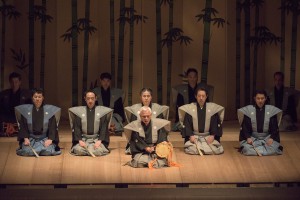
The noh portion of the evening featured Living National Treasure Kamei Tadao: “For those who attended, this was a once-in-a-lifetime experience, which fulfilled the promise of Japanese performing arts that made many of us fall in love with the culture in the first place.” (Masahito Ono)
By Vlad Baranenko (Saitama-ken, 2000-02) for JQ magazine. Vlad is an avid photographer.
On March 1, Carnegie Hall’s Stern Auditorium hosted Grand Japan Theater (also billed as An Evening of Japanese Traditional Theatre), which presented New York City with a spectacular rare performance of kyogen, noh and kabuki—all in one night. After kicking off their international tour in Tokyo and Osaka, then traveling halfway across the globe to introduce the first ever kabuki/noh performance to the royal family of Fujairah in the United Arab Emirates, the troupe finally arrived in the U.S. for one special night.
A sold-out crowd of over 2,800 witnessed some of the biggest names in traditional Japanese theater, including the noh otsuzumi artist Kamei Tadao, who in 2002 was designated as a Living National Treasure; the internationally renowned kabuki and television actor Ichikawa Ebizo XI, who began his career at just six years old and has evolved into one of the most versatile traditional actors today; and many more with direct roots to these beautiful centuries-old art forms.
The backdrop for all of the evening’s performances featured three sets of traditional Japanese screens adorned with illustrations of bamboo that blended perfectly into the background despite the enormity of the hall. The night’s program began with the kyogen piece Sanbaso. (Kyogen, an art form that almost always accompanies a noh performance and acts as a short, often comical “intermission piece” for the audience, has traditionally been based on a Shinto religious rite that prays for peace, fertility and prosperity across the land.)
JQ Magazine: New York Pledges Allegiance to George Takei at Japan Society
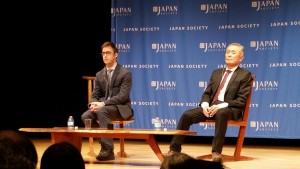
George Takei (right), with moderator Kermit Roosevelt at Japan Society, New York, Jan. 2016. (Ann Chow)
By Lyle Sylvander (Yokohama-shi, 2001-02) for JQ magazine. Lyle has completed a master’s program at the School of International and Public Affairs at Columbia University and has been writing for the JET Alumni Association of New York since 2004. He is also the goalkeeper for FC Japan, a New York City-based soccer team.
On Jan. 25, George Takei participated in a talk at Japan Society in New York. Best known for playing the role of Sulu on the original Star Trek and its movie incarnations, Takei has embarked on a second career as a social rights activist. Takei’s childhood in a pair United States internment camps for people of Japanese descent during World War II provided the focus for the conversation (entitled From Barbed Wire to Broadway), which was moderated by Kermit Roosevelt, a constitutional law scholar at the University of Pennsylvania (and great-great grandson of President Theodore Roosevelt). Takei is also concurrently appearing on Broadway in a musical inspired by his internment experiences called Allegiance (book by Marc Acito, Jay Kuo and Lorenzo Thione; music and lyrics by Jay Kuo). The show, also starring Lea Salonga and Telly Leung, is playing at the Longacre Theatre through February 14.
There is no doubt that Takei’s childhood experiences formalized his worldview and search for justice. He spoke at length of his memories of being forced out of his Los Angeles home at the age of five and relocated to the Rohwer War Relocation Center for Internment in Arkansas, and later, the Tule Lake War Relocation Center in central California. Takei also put his personal experiences within a historical and political context: After the bombing of Pearl Harbor, anti-Japanese paranoia made all U.S. citizens of Japanese heritage suspect. Due process of law was completely suspended as Japanese Americans were forcibly removed from their homes without charge or evidence. Once in the internment camps, the prisoners had to forswear loyalty to the Emperor of Japan and pledge allegiance to the United States.
Justin’s Japan: George Takei Comes to Japan Society
By JQ magazine editor Justin Tedaldi (CIR Kobe-shi, 2001-02) for Examiner.com. Visit his Japanese culture page here for related stories.
Start 2016 off right by heading down to Japan Society for some fantastic new year’s fare. This month’s events celebrate the power of theater, with productions that examine international relations between East and West, celebrating a century of growing diversity but also spotlighting a stormy past. Treat yourself and catch a break from the cold.
This month’s highlight:
Monday, Jan. 25, 6:30 p.m.
George Takei: From Barbed Wire to Broadway
Japan Society, 333 East 47th Street
SOLD OUT. Limited tickets may be released; please call the box office on January 19 at (212) 715-1258 to check availability.
“Too few people know about that dark chapter of American history,” film and television star, pop culture icon and social media powerhouse George Takei (Star Trek, Heroes) told The Daily Show‘s Jon Stewart in 2014, “when American citizens of Japanese ancestry were summarily rounded up with no charges, no trial no due process—the core pillar of our justice system—and put in barbed wire prison camps simply because we happened to look like the people that bombed Pearl Harbor.” In George Takei: From Barbed Wire to Broadway, Takei shares memories from the troubling chapter of American history when some 120,000 innocent Japanese-Americans were forcibly relocated from their homes.
For the complete story, click here.

